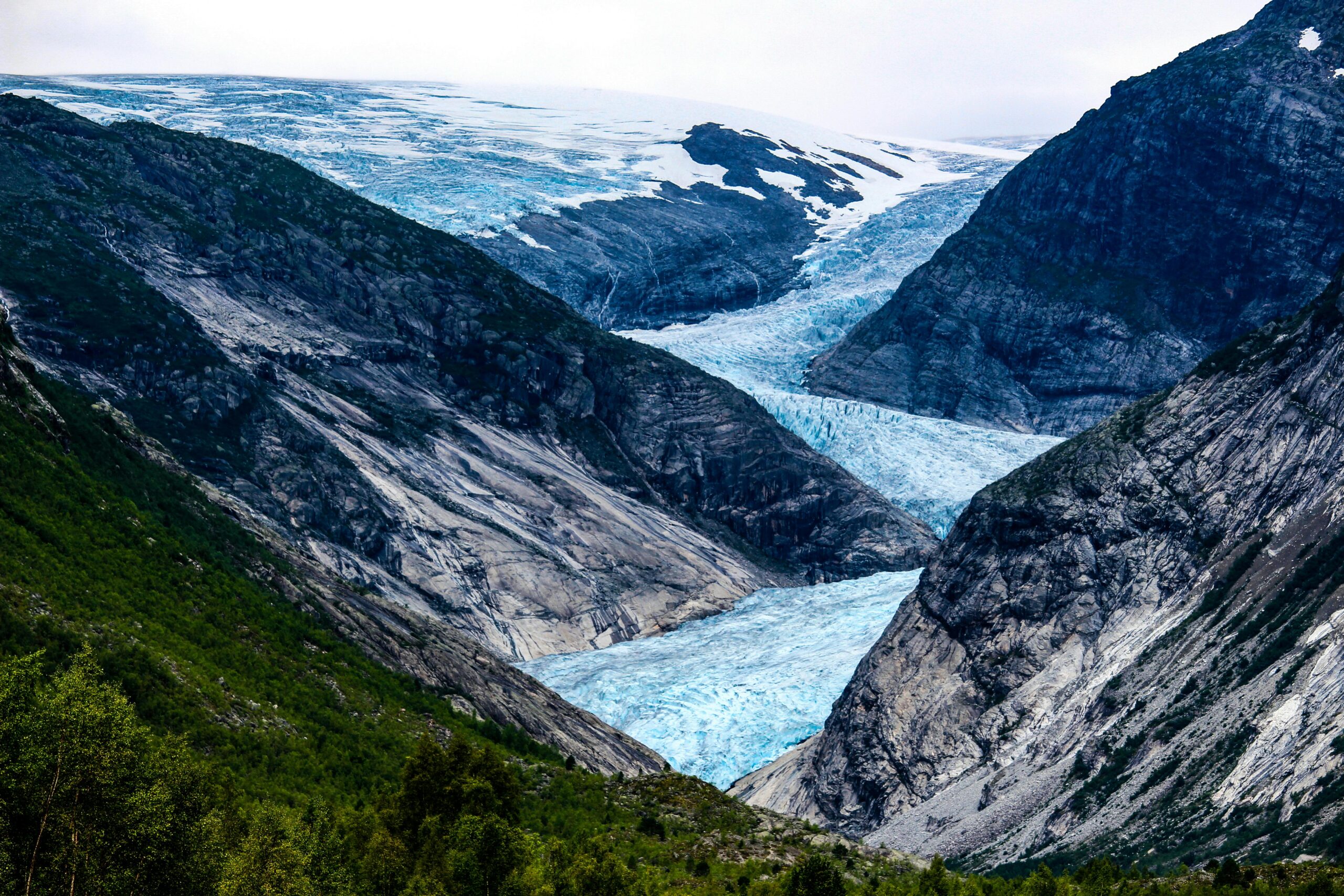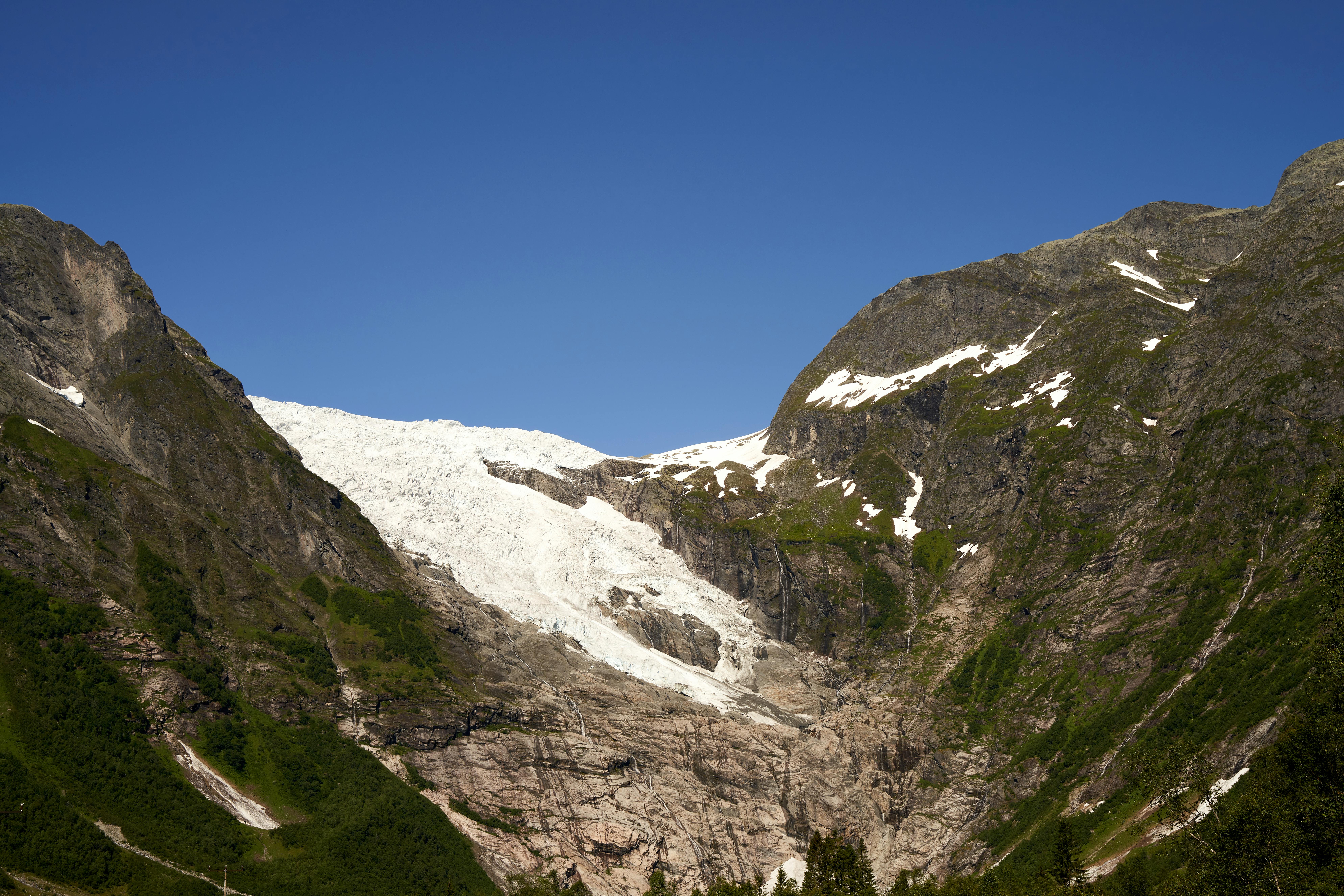The glaciers
Jostedalsbreen is the largest glacier on the mainland of Europe, a huge ice mass in Vestland, Norway. It is the centerpiece of Jostedalsbreen National Park. The glacier’s immense size and constant movement have greatly shaped the landscape. Jostedalsbreen is a vast ice cap covering roughly 188 square miles, with a maximum thickness of over 650 yards in some areas. The highest point is Høgste Breakulen at 6,421 feet above sea level. This massive ice field has over 50 outlet glaciers, which are smaller ice tongues that flow down into the valleys. A few famous ones are Nigardsbreen and Briksdalsbreen. The meltwater from the glacier carries fine silt, which gives the surrounding lakes and rivers their stunning blue and green colors. Unlike some older glaciers, Jostedalsbreen is not a remnant of the last major ice age. After that period ended, the landscape was largely ice-free. The current glacier began to form about 5,000 to 8,000 years ago as the climate cooled. For centuries, the glacier served as a vital travel route. People would walk across the ice to connect isolated fjord communities. The glacier’s size has not been constant; it expanded significantly during the “Little Ice Age” from roughly 1300 to 1850, a period when its advancing ice destroyed farms in the surrounding valleys. However, since the early 2000s, it has been shrinking due to climate change. For example, in 2018 alone, some glacier arms like Nigardsbreen retreated 266 feet. Established in 1991, Jostedalsbreen National Park was created to protect the glacier and its unique ecosystems. The park’s elevation ranges from sea level to 6,834 feet at its highest peak. The park offers opportunities for hiking, including guided walks on the glacier, but caution is essential because of the dangerous crevasses and ice formations. The park has visitor centers where you can learn about the geology, history, and ecology of the glacier.

We liked getting to Briksdalsbreen Sightseeing Spot, and we liked getting to Briksdalsbreen Sightseeing Spot another tiem! It’s an easy 2,187-yard hike to the glacier’s viewpoint, but you can also get almost all the way there with a small car for a fee. Once we got there, we could get close to the water of the glacier lake, but the glacier itself is much higher up, so it’s not possible to get very close. We also liked our stay a lot at both Melkevoll Bretun Camping and Gryta Camping. All the spaces along the access road are quite noisy, but there’s a good place to park once you get close to Briksdalsbre Mountain Lodge.
We had a great time at the Glacier Museum near Fjærland. The museum was so modern and interactive, which we really loved. There were also tons of explanations in English, which was super helpful. After our visit, we drove to the Bøyabreen Glacier Viewpoint and were completely blown away by the sight of the glacier.
